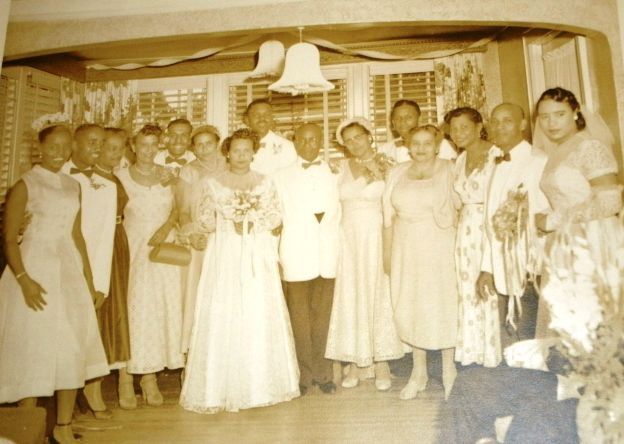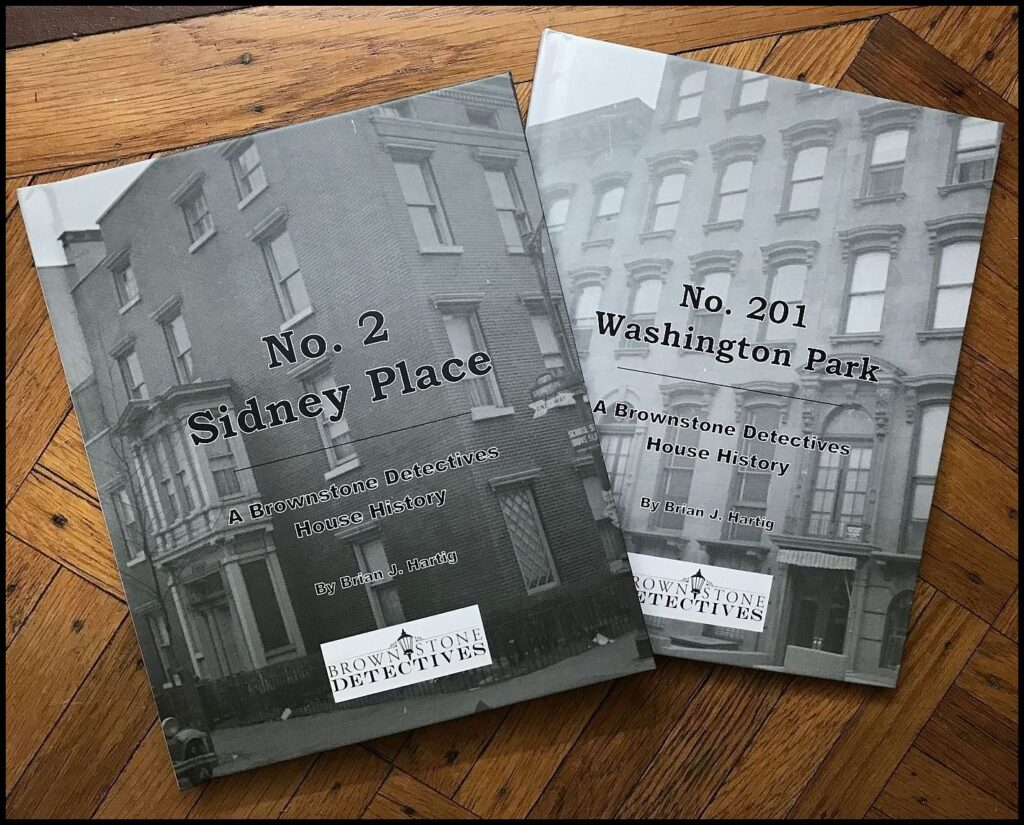AUNT CAR vs. THE IMMIGRATION ACT OF 1917

Brownstone Detectives investigates the history of our clients’ homes.
The story you are about to read was composed from research conducted in the course of one of those investigations.
Do you know the history of YOUR house?
********************************************************************************************************************************
(In the process of writing a House History Book, we research the history of a home’s owners. While researching one particular brownstone, we discovered that – soon after purchasing her brownstone in the 1950s – the Federal Department of Justice issued a warrant for one owner’s arrest and deportation. Sadly, this was not a rare event in Bedford-Stuyvesant at the time.)
JAMES GILL MEETS “AUNT CAR”

It was probably at some point after James Henry Gill, a mechanic from Trinidad, had registered for the Selective Service in 1942 that he met Caroline Beatrice McLean. McLean, a former schoolmarm from Barbados was then working as a garment worker and living with her sister in an apartment in Harlem.
The exact date, time and place of the encounter is lost to the ages. What we do know, however, is that once they did meet they made a great match.
Eventually, the couple would take the “A” Train – soon to become famous by way of Duke Ellington’s song – to Bedford-Stuyvesant.

Once in Bedford-Stuyvesant, they moved into a brownstone at No. 9 Arlington Place, close to Bedford Avenue.
MOVING TO MACON STREET
A few years later, on 15 May of 1951, James and Caroline purchased 738 Macon Street from the former owners, the Loftuses. At the time, James was 55 and Caroline was 56.
Bedford-Stuyvesant, according to 1950 census figures, was approximately 52% black. The Eastern part of Bedford-Stuyvesant, an area that the unscrupulous real estate blockbusters had targeted last, took longer before it became primarily black, but was probably on the cusp of doing so at the time. (Blockbusting was a business practice of U.S. real estate agents and building developers meant to encourage white property owners to sell their houses at a loss, by implying that racial minorities were moving into their previously racially segregated neighborhood, thus depressing real estate property values. Those same agents/developers would then sell these properties to black buyers at highly inflated prices and extremely poor – often literally un-repayable – percentage rates.)

A month after purchasing their new house, the Gills placed an ad in the household goods section of the Brooklyn Daily Eagle. They were selling a “10-piece, walnut” “DINING ROOM SET” for $90. In that ad, we learn the Gill’s telephone number for the first time: GLenmore 2-4415 (452-4415).
IMMIGRATION TROUBLES
In 1952, after the Gills had been living on Macon Street for just a year, Caroline seemed to have gotten herself into some immigration trouble. It involved her having probably entered the U.S. illegally and having been flagged for deportation.
Her paperwork from the Department of Justice noted that there had been a warrant out for her arrest. The Immigration Act of 1917 was referenced and it looked as though Caroline had been scheduled, possibly unbeknownst to her, for deportation based upon the exclusions of that Act.

That Act was the manifestation of the imminent entrance of American into World War I. With xenophobia at a new high at the time, legislators wanted to restrict immigration, and a bill doing that was passed over President Wilson’s veto.
The Act compiled a list of the types of people who were labelled “undesirables” here in the U.S. High on this list were citizens of China and those from the Pacific Island region. Caroline was from neither of these places, so it is likely that she fell into one of the other many classes, most likely those who had entered the U.S. illegally.
REPEAL AND RELIEF
Luckily for Caroline, though, this Act was repealed the following year in 1952 when a new – and more liberal – Immigration Act took its place. In a stroke of luck, the U.S. government advised, at that point, that her deportation be “suspended” and that the “warrant of arrest” be “cancelled and record of lawful entry for perm res (permanent residence) created.”

This action, which may have also taken into account the fact that she had a common law American husband and had recently purchased property in the U.S., appeared to be some sort of amnesty for illegal entry into the U.S. Now that any expulsions that may have prevented her from obtaining a visa were no longer an obstacle, two years later U.S. Naturalization records would indicate that Caroline, on 6 July 1954, was issued an Alien Registration Number.
So, now, with Caroline and her sisters – and the other members of their extended family – all together in the U.S., their tradition of spending holidays at one another’s homes – with large dinners, music and dancing – began.
(See THE RETURN OF AUNT CAR, to see how we met Aunt Car’s great-niece, Stacey Maupin Torres, who helped us to piece together so much of this story.)
———————————————————————————————————————–
 Brownstone Detectives is an historic property research agency. Our mission is to document and save the histories of our clients’ homes. From our research, we produce our celebrated House History Books and House History Reports. Contact us today to begin discovering the history of your home.
Brownstone Detectives is an historic property research agency. Our mission is to document and save the histories of our clients’ homes. From our research, we produce our celebrated House History Books and House History Reports. Contact us today to begin discovering the history of your home.